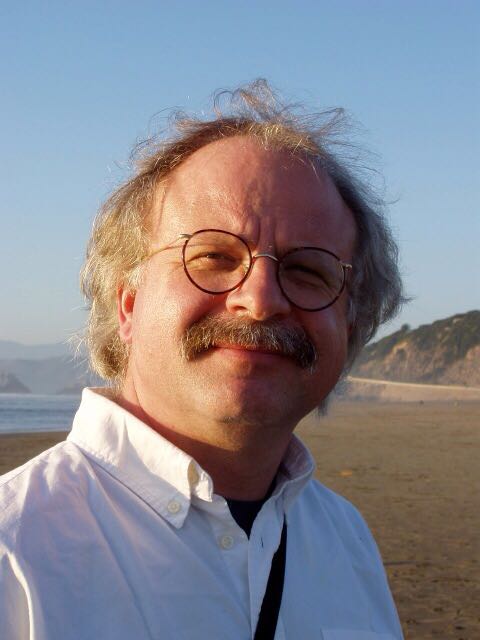
Ya-Wen Sun (孙雅文)
Position
Assistant Professor (2017 - current)
Research Interest
The Anti-de Sitter/Conformal field theory (AdS/CFT) correspondence is a conjecture that was first proposed in 1997 by Juan Maldacena in the framework of string theory, which has been developed as a consistent theory to combine gravity and quantum mechanics. The conjecture equates two seemingly very different theories to each other: a 4+1 dimensional weakly coupled gravity theory and a 3+1 dimensional strongly coupled conformal field theory. Soon after string theorists found more and more evidence to support this conjecture, they started to discover that AdS/CFT correspondence has a lot of implications and applications in various areas of physics and connects many unrelated theories together, e.g. quantum gravity, quantum field theory, hydrodynamics, nuclear physics, QCD, quantum information etc. In 2007, physicists (both high energy and condensed matter theorists) started to use AdS/CFT correspondence to solve strongly coupled condensed matter problems. AdS/CFT correspondence is a strong-weak duality, i.e. weakly coupled gravity theory in the classical limit corresponds to strongly coupled quantum field theory at the boundary. This allows us to look at difficult strongly coupled problems using the language of weakly coupled gravity theory. AdS/CFT correspondence also provides a useful tool to study the real time propagators compared to the conventional methods in condensed matter physics. AdS/CMT (applications of AdS/CFT to condensed matter theories) has been a very fruitful research area during the last ten years and has become more closely related to experiments in condensed matter physics.
My research includes the following several topics:
1 The dual of topologically nontrivial condensed matter systems. In the condensed matter community, there has been a lot of interest in various topological condensed matter systems recently, for example, quantum hall systems and topological insulators which are gapped topological systems, and Weyl semimetals which are gapless topological systems. The concept of topology in condensed matter systems has been developed in the weakly coupled limit and an immediate question that arises is whether nontrivial topological systems still exist at strong coupling. Does there exist a duality between a certain geometry in weakly coupled gravity theory and topologically nontrivial state? If it exists, is there any novel prediction or hint from the gravity side for the dual topological system? As a first step to answer these question we build a holographic model for a topological gapless Weyl semimetal state and study possible implications of the holographic model to the transport behavior of a topological Weyl semimetal system.
Office: Rm. S401-1, UCAS Zhong-Guan-Cun Teaching Building, No. 3 Nan-Yi-Tiao Road, Haidian District, Beijing, P. R. China (view map)
通讯地址:北京市海淀区中关村南一条3号 中国科学院大学中关村教学楼S401-1室

Rudolf Podgornik
Position
Faculty in School of Physics, UCAS
View Prof. R. Podgornik's personal page
Research Interest
My research in the year 2019 was focused on several topics. In the framework of advanced theories of electrostatic effects in soft matter systems, I was specifically analyzing the charge regulation of proteins, as well as non-mean-field effects in description of macroion solution and electrolytes. In the context of dynamic and active matter theories, I was considering the mean-field theory of active electrolytes and the effects of external driving on confined fluids. In the context of polymer solution theory, I was analyzing the splay–density coupling and the acoustic and osmotic birefringence in semiflexible main-chain nematic polymers. In the context of the Casimir physics, I was considering the surface anchoring duality in smectic-A liquid crystals and the path integrals for higher derivative field-actions. In the context of the physical virology I was analyzing the pH-induced morphological changes and the hidden symmetry of proteinaceous viral shells, as well as the spontaneous domain formation of elastic filaments like DNA in virus capsids. In the field of the physics of DNA I was studying the molecular mechanism and binding of doxorubicin, the orientational transition and complexation of short DNA fragments with anionic membranes and the solution ordering of fragmented DNA analogs such as observed in mono nucleotide self-assembly.
Selected Recent Publications
[1] Tine Curk, James Daniel Farrell, Jure Dobnikar, and Rudolf Podgornik. Spontaneous Domain Formation in Spherically Confined Elastic Filaments. Phys. Rev. Lett. 123, 047801 (2019).
*see research highlight for details.
[2] D.S. Dean, B. Miao and R. Podgornik. Path integrals for higher derivative actions. J. Phys. A: Math. Theor. 52 505003 (2019).
Contact
Email: This email address is being protected from spambots. You need JavaScript enabled to view it.
